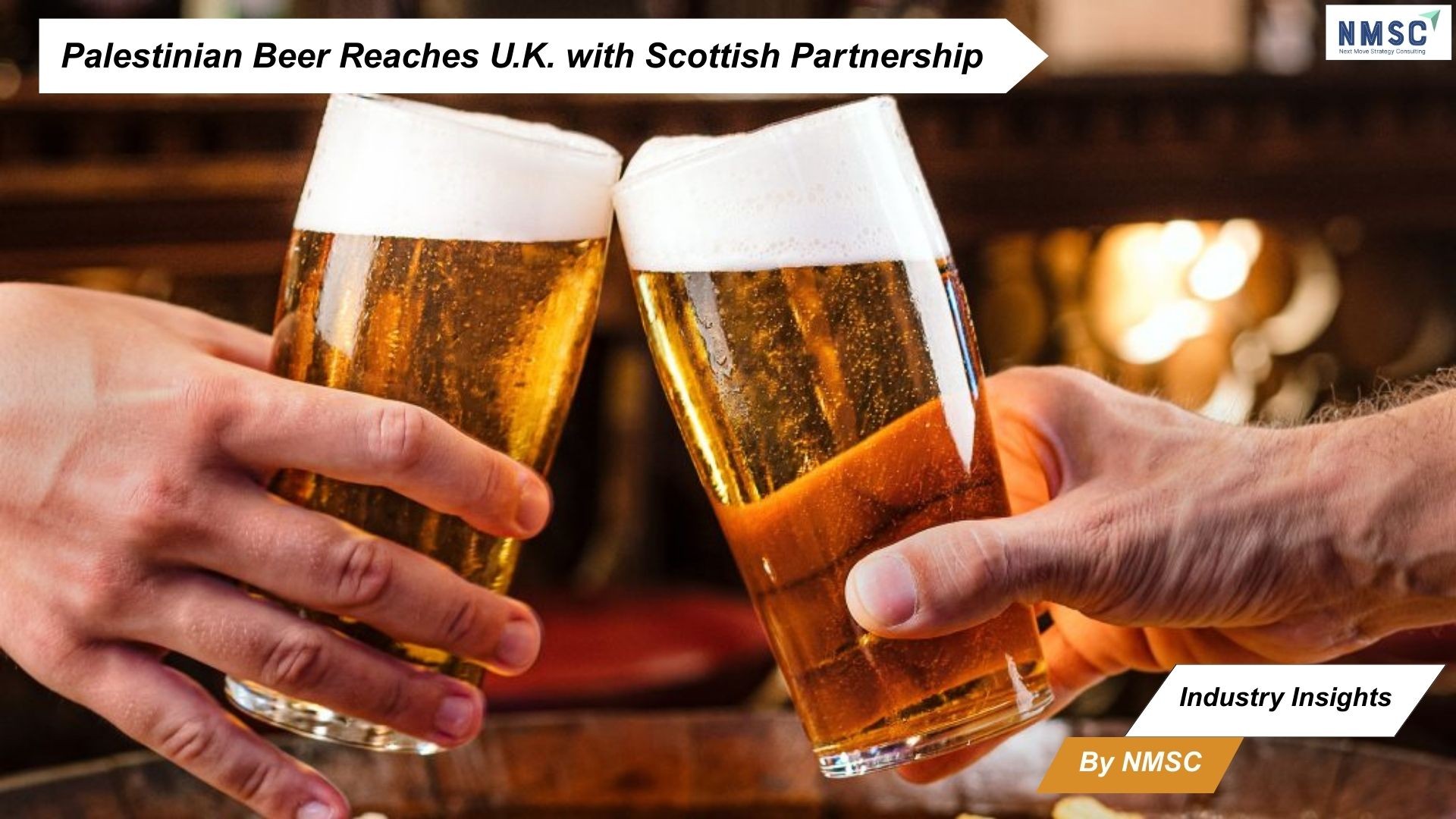Is the Ice Cream Market Poised for a Sweet 2025?
Published: 2025-11-26

What if your favorite scoop of ice cream held the key to understanding a $114 billion-plus global indulgence industry on the cusp of transformation?
In late 2025, the Ice Cream Market is buzzing with corporate shake-ups, ambitious expansions, and even a dash of social activism. As a market research firm at Next Move Strategy Consulting, we dive into these developments to uncover how they shape consumer choices and business strategies.
Drawing from fresh, credible reports, this blog unpacks the latest—because who doesn't love a story that ends with sprinkles?
Why are Ice Cream Giants Breaking Free in 2025?
Picture this: A powerhouse brand like Unilever deciding it's time to let its ice cream division stand alone. That's exactly what's happening as the company prepares to spin off its ice cream operations into the independent Magnum Ice Cream Company. Set for a listing on December 8, 2025, in Amsterdam, this move allows the new entity to focus solely on brands like Magnum, Ben & Jerry's, Solero, and Viennetta.
The goal? Streamlined operations and sharper innovation in a competitive snacking world.
This demerger isn't isolated. In India, Hindustan Unilever Limited (HUL) is following suit, with Kwality Wall's Ice Creams (KWIL) gearing up for separation effective December 1, 2025. Currently the second-largest player by retail sales value, KWIL aims to claim the top spot through targeted growth.
These spin-offs signal a broader trend: Companies are shedding diversified portfolios to double down on high-potential categories like frozen treats, where agility meets indulgence.
How do these Spin-offs Fuel Market Momentum?
In analytical terms, such restructurings enable specialized investments and risk management. For Magnum, independence means tailoring supply chains to ice cream's unique demands, including hedging against volatile commodity prices for cacao beans and sugar.
KWIL, meanwhile, plans to expand its distribution footprint dramatically—reaching 3 million additional retail stores in India via a growing cabinet fleet. This addresses the current gap where only 1.2 million of India's 13 million stores stock ice cream, compared to 4-5 million for carbonated drinks.
To Visualize the Scale, Let’s Consider this Table Summarizing Key Strategic Shifts:
|
Company |
Key Action |
Projected Impact |
|
Magnum Ice Cream Company |
Spin-off from Unilever (Dec 8, 2025) |
Focused innovation; €350-380M supply chain revamp |
|
KWIL |
Demerger from HUL (Dec 1, 2025) |
Distribution to 3M more stores; premium brand push |
In summary, these corporate maneuvers are not mere paperwork—they position ice cream as a standalone powerhouse:
-
Enhanced agility for product launches.
-
Better alignment with regional consumer needs.
-
Potential for market share gains through dedicated resources.
What Drives the Ice Cream Surge in Emerging Economies?
Have you ever wondered why ice cream feels like summer's best-kept secret in places like India? The answer lies in untapped potential.
The Indian ice cream market stands at $2.6 billion (Rs 21,000 crore) in 2025, with projections to hit $4.4 billion (over Rs 36,000 crore) by 2030 at an 11% compound annual growth rate (CAGR). Factors include rising refrigerator ownership, low per-capita consumption, and under-penetrated retail channels—KWIL operates in just 200,000 of those 1.2 million ice cream-selling stores.
Globally, similar dynamics play out, but with a twist: Magnum's UK and Ireland head, Jamie Farrell, highlights the enduring appeal of "indulgent snacks" despite health trends. This growth isn't accidental; it's engineered through premiumization—think aligning everyday products with Rs 10-50 snacking prices in India or launching lower-sugar variants worldwide.
Can Infrastructure Investments Keep Pace with Demand?
Absolutely, and here's the proof: Magnum is pouring £50 million ($66 million) into its Gloucester, England factory, Europe's second-largest ice cream site. Opened in 1959, it churns out over 600 million units annually, with 80% for the UK market. Upgrades include rebuilt mix plants and high-speed lines, boosting capacity by 50% from 2023 levels by 2027 as part of a broader €350-380 million supply chain overhaul. This "vote of confidence," as factory manager Craig Lee calls it, ensures shelves stay stocked amid rising demand.
In conclusion, infrastructure is the unsung hero of market expansion:
-
Capacity boosts mitigate supply shortages.
-
Regional investments like Gloucester support 80% local fulfillment.
-
Overall, they underpin the 11% CAGR in high-growth areas.
How are Health Trends Shaking Up Ice Cream Choices?
Is ice cream's sugary allure fading in 2025? Not quite, but evolution is key.
The rise of GLP-1 weight loss drugs poses a challenge, potentially curbing demand for high-sugar treats. Magnum's chief supply chain officer, Sandeep Desai, acknowledges this: "Whilst GLP-1 is not a factor we can ignore, ice cream is still always an indulgent snack." The response? Innovation, including reduced-sugar options, smaller portions, protein-enriched formulas, and even hydration-focused products to align with wellness shifts.
This proactive stance maintains relevance.
In analytical sections, companies must balance indulgence with health-conscious adaptations to sustain consumer loyalty. Data shows e-commerce for ice cream in India leaping from negligible in FY20 to over 10% by FY25, fueled by quick-commerce platforms—perfect for trialing these lighter variants.
Key Players in the Ice Cream Landscape
Global ice cream competition is shaped by a mix of established multinational corporations and innovative regional or digital-first brands. Legacy players such as Unilever, Nestlé, General Mills, and Lactalis dominate through extensive distribution networks, strong brand portfolios, and long-standing consumer trust. These companies adapt to evolving consumer trends, such as plant-based options, healthier formulations, and sustainable packaging helps them secure consistent market share while appealing to a wide range of tastes and preferences.
What Role Does Activism Play in Flavor Innovation?
Speaking of twists, activism is stirring the pot. Ben & Jerry's co-founder Ben Cohen launched a watermelon-flavored sorbet in 2025 after Unilever vetoed a Palestine-themed flavor proposed by the brand's board.
Watermelon symbolizes Palestinian solidarity, and Cohen's move—complete with fan-solicited designs—highlights tensions post-2024 lawsuits against Unilever for alleged silencing of pro-Palestinian stances. Cohen quipped, "So I’m doing what they couldn’t." This isn't just flavor news; it reflects how social causes influence branding.
How Do 2025 Headlines Reshape the Ice Cream Landscape? NMSC’s Views
At Next Move Strategy Consulting, we see these stories as market movers. The Magnum spin-off and Gloucester investment signal robust supply-side confidence, potentially stabilizing prices amid commodity swings and adding 50% capacity by 2027—easing global shortages. In India, KWIL's demerger and 11% CAGR forecast unlock $1.8 billion in new value by 2030, emphasizing distribution as a growth lever.
Meanwhile, Ben Cohen's sorbet underscores activism's double-edged sword: It risks polarization but amplifies engagement, with social media calls reaching 95,000 followers. These aren't isolated events; they interconnect. Spin-offs free capital for innovations countering GLP-1 trends, while expansions tap emerging markets. For stakeholders, this means heightened competition but richer opportunities—think 10% e-commerce share in India alone.
We add value by noting: Tariffs had minimal impact (tens of millions for Magnum), proving localized production's edge. Overall, 2025 positions ice cream for resilient, indulgent growth.
Next Steps: Your Actionable Playbook
Ready to scoop up opportunities? Here are few takeaways from our analysis:
-
Audit Your Portfolio: Assess exposure to spin-offs like Magnum—diversify into premium, low-sugar lines to hedge GLP-1 risks.
-
Expand Distribution: In emerging markets, target under-penetrated retail (e.g., India's 1.2M stores) with affordable snacking formats for quick wins.
-
Embrace Innovation: Invest in R&D for health-aligned products; track activism trends to align brands with consumer values without overstepping.
-
Monitor Capacities: Leverage factory expansions like Gloucester's for supply chain partnerships, aiming for 50% efficiency gains.
-
Forecast Growth: Use 11% CAGR models for India to project regional strategies, focusing on e-commerce's 10%+ surge.
What flavor of market insight do you crave next? Share in the comments—let's keep the conversation chilling.
About the Author
 Sneha Chakraborty is a passionate SEO Executive and Content Writer with over 4 years of experience in digital marketing and content strategy. She excels in creating optimized, engaging content that enhances online visibility and audience engagement. Skilled in keyword research, analytics, and SEO tools, Sneha blends creativity with data-driven insights to deliver impactful results. Beyond her professional work, she enjoys reading, sketching, and nature photography, drawing inspiration from creativity and storytelling.
Sneha Chakraborty is a passionate SEO Executive and Content Writer with over 4 years of experience in digital marketing and content strategy. She excels in creating optimized, engaging content that enhances online visibility and audience engagement. Skilled in keyword research, analytics, and SEO tools, Sneha blends creativity with data-driven insights to deliver impactful results. Beyond her professional work, she enjoys reading, sketching, and nature photography, drawing inspiration from creativity and storytelling.
About the Reviewer
 Sanyukta Deb is an accomplished Content Writer and Digital Marketing Strategist with extensive expertise in content strategy, SEO, and audience engagement. She specializes in building strong brand visibility through data-driven campaigns and impactful, value-added researched content. With a passion for creativity and innovation, she blends strategic thinking with design and communication to craft meaningful digital experiences. Over the years, she has contributed cross-functional marketing projects, driving measurable impact and audience engagement.
Sanyukta Deb is an accomplished Content Writer and Digital Marketing Strategist with extensive expertise in content strategy, SEO, and audience engagement. She specializes in building strong brand visibility through data-driven campaigns and impactful, value-added researched content. With a passion for creativity and innovation, she blends strategic thinking with design and communication to craft meaningful digital experiences. Over the years, she has contributed cross-functional marketing projects, driving measurable impact and audience engagement.

















Add Comment